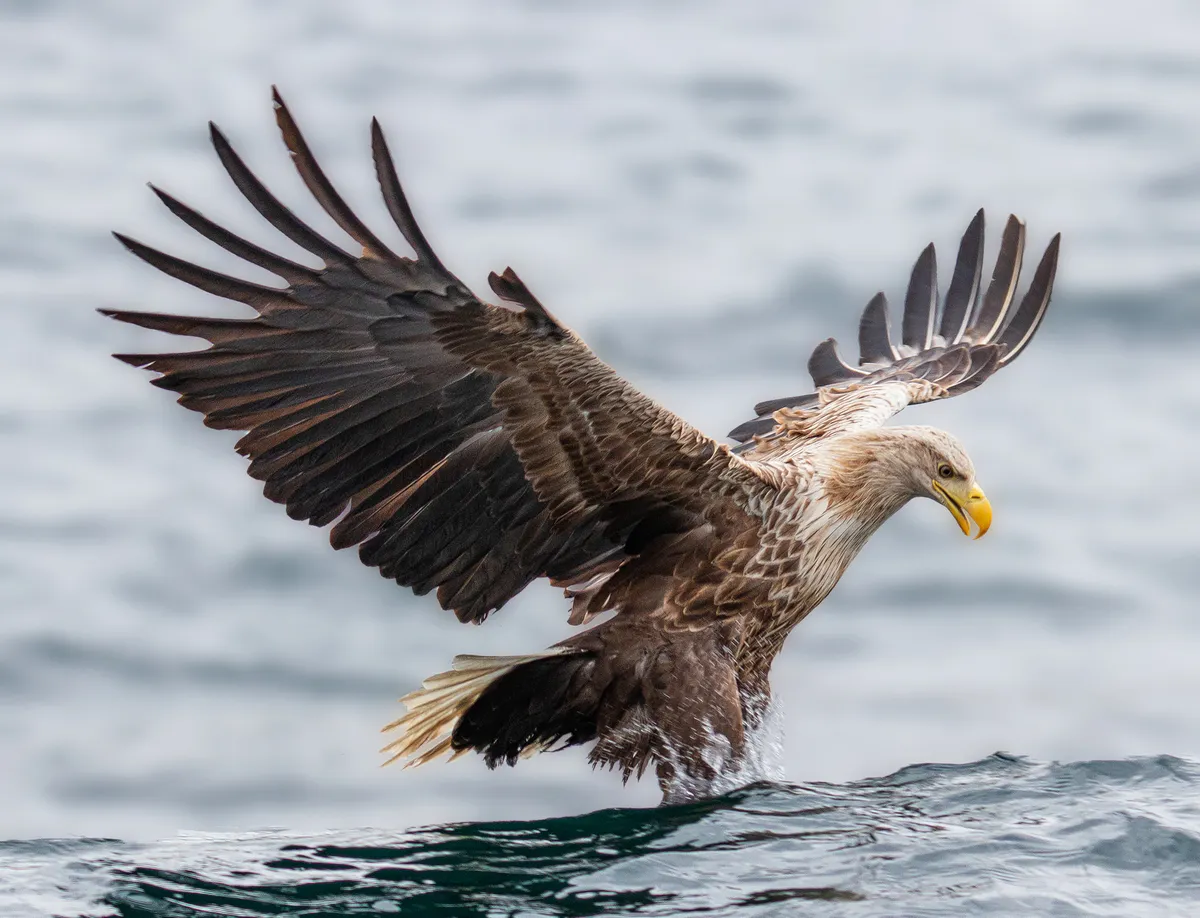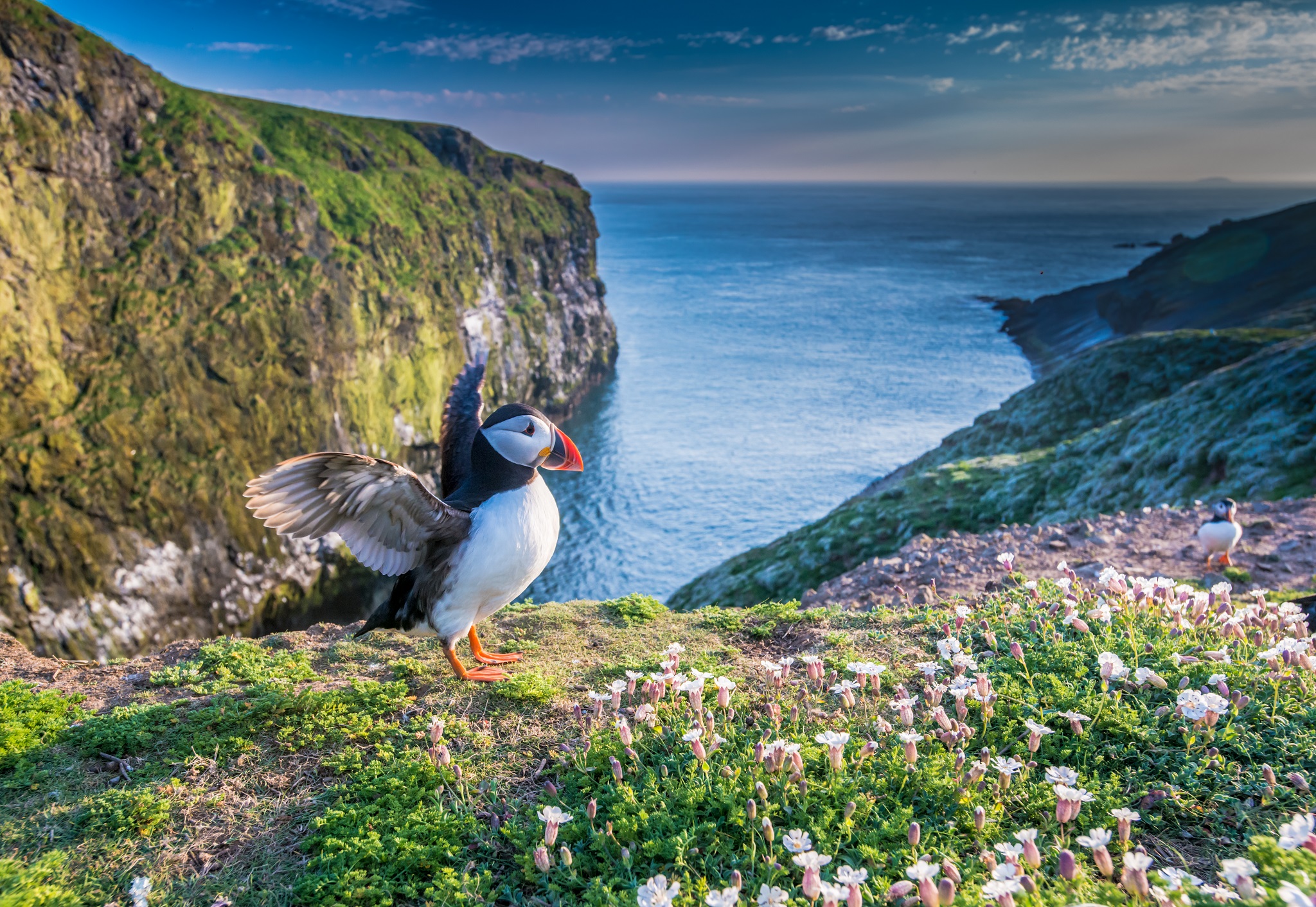Osprey and white-tailed eagle are iconic species, which capture the imagination and elicit gasps of awe and wonder when sighted soaring the skies, or plunging into the water for a fish – but where can you expect to spot them and how do you tell the difference between these magnificent birds of prey?
Due to their supreme hunting skills and ability to pluck fish out of the water with consummate ease, both osprey and white-tailed eagles are often known by their nicknames of ‘fish hawk’ and ‘sea eagle’.
Are white-tailed eagles and ospreys related?
Despite their name association with hawks, ospreys are in fact the only raptor in the Pandionidae family. In contrast the white-tailed eagle belongs to the Accipitridae family, which includes hawks, kites, harriers and other eagles.

How to tell the difference between an osprey and a white-tailed eagle
With a wingspan of up to 2.4m, the white-tailed eagle is the UK’s largest bird of prey and the fourth largest eagle in the world. Huge broad wings and a slow, heavy wing beat give the impression of eclipsing the sun, and rise to the nickname of the ‘flying barn door’.
By comparison with relatively narrow wings measuring 1.4-1.7m, an osprey sits somewhere between a buzzard and a red kite in size. It flies steadily and with purpose, using a combination of powerful wingbeats and glides, and can easily be mistaken for a gull due to its distinctive ‘M’ wing-shape in the air.
As with all raptors, females are larger than the males, this helps with defence of the nest, but also enables effective brooding of rapidly growing young. In the case of white-tailed eagles, females weigh in at a mighty 4-7kg, whereas the males are 3.5-5kg. Ospreys in comparison weigh a slight 1.2-2kg.
Both species share similar brown feathers across the back and upper wings, bright yellow eyes (in adults) and un-feathered, scaly legs below the knee. It is there that their similarities end. As its name would suggest adult white-tailed eagles not only have a pale head, brown underside, a huge yellow beak and yellow legs, but a brilliant white tail. Conversely, osprey have a white head and underside, interspersed with brown underwing coverts, grey-blue legs, a dark beak and of course their iconic ‘bandit’ eye mask.
White-tailed eagle vs osprey: diet

Fish make up a large part of the diet of a white-tailed eagle, supplemented by hunting and scavenging seabirds, waterfowl, rabbit, deer and carrion. In comparison, ospreys are exclusively piscivores. Both are uniquely adapted to taking fish, with razor-like talons and spiny protrusions on the underside of their feet known as ‘spicules’, providing a Velcro-like grip on slippery fish.
Ospreys have evolved even further with the adaption of a reversible outer toe, ensuring any hard-won prey cannot escape, and can be turned into an aerodynamic position for the flight back to the nesting site.
Both species will hunt for freshwater and saltwater fish, however the technique used does differ. White-tailed eagles prefer to use the element of surprise, using a swooping approach to snatch fish from the surface without entering the water, whereas osprey plunge feet first from height, often resting on the water, before using their flexible wings to take off with their catch.
Where can you see ospreys and white-tailed eagles?
With their preference for aquatic prey, both species breed close to clear lochs and lakes and near the coast, though ospreys are more likely to be found inland.
White-tailed eagles will nest on coastal cliffs, but large conifer trees are usually preferred by both species. Whilst white-tailed eagles will nest below the crown of the tree, ospreys prefer to be perched at the very top, utilising broken branches to ensure they have a 360º view of any approaching threats. Both are loyal to their nesting sites and will use them for many years, adding material to them until they become huge structures.
What's their conservation status in the UK?
Sadly, the relentless persecution of white-tailed eagles and ospreys from a combination of shooting, poisoning and egg collecting lead to their extinction in the UK by the early 20th century. The last known white-tailed eagle, a lone albino female, was shot in Shetland in 1918, whilst the osprey population was deemed functionally extinct by 1916.
Thanks largely due to the tireless work of conservationists – in particular Roy Dennis – and changes in legal protection, both are now enjoying a steady resurgence. In 1954, a pair of ospreys naturally recolonised RSPB Loch Garten, and despite continued efforts by egg thieves, ospreys began to slowly flourish, thanks to the support of round-the-clock volunteer nest protection programmes.
Meanwhile, in 1975 the first reintroduction of white-tailed eagles was being undertaken on the island of Rum. However, it was not until 1983 that the first wild breeding occurred. Since then, further translocation project and natural expansion of both white-tailed eagles and ospreys have seen the UK populations increase to their current levels of 125 and 300 breeding pairs respectively.
How many white-tailed eagles are there in the UK?
There are 125 breeding pairs in the UK
White-tailed Eagle factfile
Haliaeetus albicillia (Also known as ‘fish eagle’, ‘sea eagle’, ‘eagle with the sunlight eye’.)
Family: Accipitridae
UK Breeding Population: 125 breeding pairs
UK Conservation Status: Amber
Wingspan: 2-2.4m
Weight: 4-7kg (female), 3.5-5kg (male)
Body Length: 70-90cm
How many ospreys are there in the UK?
There are 300 pairs in the UK
Osprey factfile
Pandion haliaetus (Also known as ‘fish hawk’, ‘fish eagle’.)
Family: Pandionidae
UK Breeding Population: 300 pairs
UK Conservation Status: Amber
Wingspan: 1.4-1.7m
Weight: 1.2-2kg
Body Length: 50-60cm
Did you know?
Both species share reference in their scientific name to ’aetos’ meaning eagle and ‘hal’ meaning sea or salt in ancient Greek, emphasising the importance of this habitat in their respective lives. The revered status of the osprey is further reflected in the reference to Pandion I, a mythical Greek king of Athens. Meanwhile, the white-tailed eagle is evocatively described in the Gaelic culture as ‘iolar sùil na grèine’, or 'the eagle with the sunlight eye', on account of its piercing yellow gaze.
Main image: Getty Images

